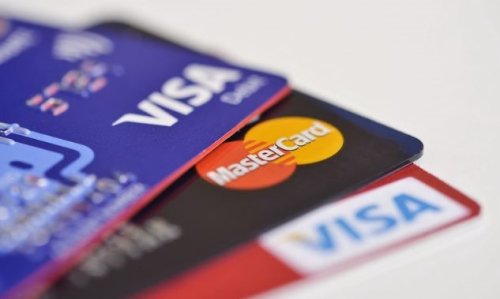On August 11th, 1994, 21-year-old Dan Kohn, who ran the New Hampshire based website, NetMarket, achieved the impossible and sold a Sting CD to a friend. What was remarkable about this transaction wasn't finding someone willing to buy a second-hand Sting CD, quite an achievement in itself, but that it was conducted completely online.
This was the first time in the history of mankind that goods were paid for by credit card over the Internet, thanks to encryption technology. Online payments were now safe. Well, that is to say, safe-ish, sort of. Human nature being what it is, as soon as our Dan found a way to secure online payments, other less savoury characters started looking for ways to break it. And so the struggle has continued for the last 25 years.

Nowadays, it is common wisdom that the best way to keep your bank account details secure is not to share them online. And luckily technology allows us to do just that. There are now many payment options that you can use for online shopping without exposing your banking information.
Here we'll look at the advantages and disadvantages of two of the most popular methods and decide which is better, a virtual credit card or an e-wallet.
What is a Virtual Credit Card?
When you apply for a virtual credit card, you don't get an actual card, just a
randomly-generated card number. You set the credit limit for as much (or as
little) money as you want to spend, and use it online as you would an actual
card. Some virtual cards also allow you to set the expiration date, others are
for single-use only. Your spending will be charged to your regular card, but
the merchant doesn't have further access to your account.
What is an E-wallet?
An e-wallet is an application that allows you to make online payments using only an email address and a password. You deposit funds into the wallet or link it to one or more accounts or cards (including virtual cards) and can then spend money online without sharing sensitive information. If your ewallet is installed on your smartphone, you can also use it offline in shops that accept electronic payments.

Now we'll take a look at the advantages and disadvantages of each of these payment methods. As both offer almost complete security while making online payments, we won't mention that aspect again.
Virtual Credit Cards
Advantages of Virtual Credit Cards
• You set the limit you can spend. This doesn't just protect you from unauthorised spending on the card, it can also help you manage your budget.
• They are widely accepted. Any online store that accepts credit cards, meaning all of them, will also accept virtual credit cards.
• They are time-limited. Some cards are one-purchase only, meaning they expire as soon as the transaction is successfully completed, others are only valid for a limited amount of time, usually not longer than a year. This can protect you from paying automatic renewals to subscriptions that you don't want.
Disadvantages of Virtual Credit Cards
• You can only use them online.
• You can't use them where you have to show the physical card in order to collect your purchase, for example, when buying airline tickets or renting a car.
• They are not ideal for use with recurring charges. Although the time-limit on the card does offer extra security, it also means you might miss making recurring payments because the card has expired.
E-wallets
Advantages of an E-wallet
• Convenience. Like a real wallet, an e-wallet can hold more than just money, depending on which one you choose, you can also store loyalty cards, credit cards, even your driving licence and other identification in them.
• You can use them both on and offline. If you store your e-wallet on a mobile device, you can use it to pay in physical shops, providing they are equipped to accept contactless payments, of course.
• You have to authorize every transaction with your PIN (or thumbprint if your device supports biometrics). No more "extra" charges.
• They can help you manage your budget. Some e-wallets have the ability to generate reports that categorize your spending. This allows you to see where your money is going and where you could make reductions. You can also set a fixed budget to different categories of spending.
Disadvantages of an E-wallet
• They haven't yet been universally adopted, meaning not all retailers, online or off, will accept them.
• Your mobile device needs to be charged. If your battery goes dead, you have no way of making payments.
• They can be more expensive. Processing fees can be higher than when using a credit or debit card.
Summary
As you can see, both e-wallets and virtual credit cards are convenient methods of making secure online payments. The ewallet, however, offers greater flexibility and utility as it can also be used offline and offers a range of extra features, depending on which one you choose. This is why e-wallets are our payment method of choice.

Which ewallet you use will depend on where you are going to spend your money and on what. If you need help deciding which is most appropriate for you, here is a guide to the most popular e-wallets and what they are good for. We hope this blog has answered your questions and thank you for reading.


